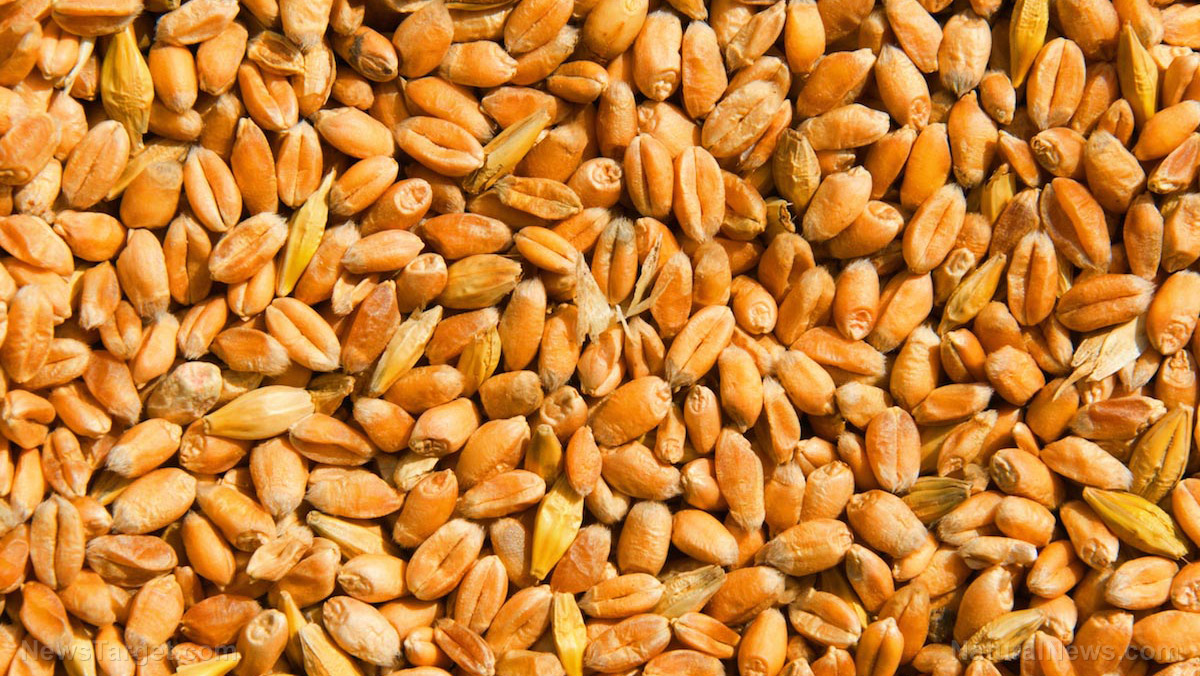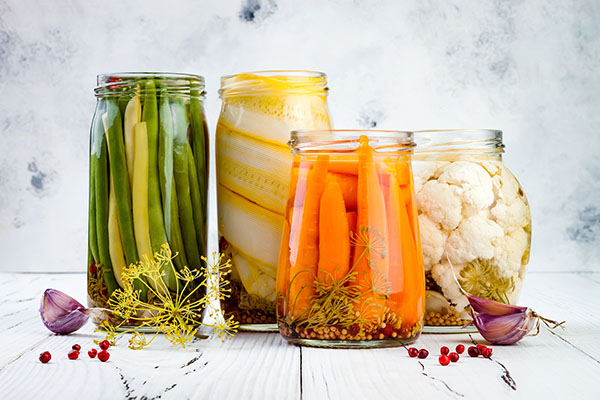
Wheat seeds or wheat berries are true whole grains that will keep you healthy. They are a great source of complex carbohydrates, fiber, healthy fats, protein, phytochemicals, minerals and vitamins A, B, C, E and K.
Wheat berries are thick, short grains that look similar to brown rice. Industrious preppers grind them into whole wheat flour for baking – not purchasing them in bulk in the form of flour.
When boiled, cooked wheat berries have a chewy, subtly nutty and earthy flavor. They're sturdy enough to handle bold salad dressings and still delicate enough to taste delicious with some cinnamon, honey and milk.
If you like sprouts in salads and sandwiches, just add a little water to wheat berries and you can grow your own wheat sprouts.
Here's a list of good containers for packaging and storing wheat berries to keep them in your stockpile for years. (Related: 4 Best food storage containers for your stockpile.)
#10 Cans
The can creates a time capsule that protects the wheat berries from oxygen, moisture, rodents and light. The size of these small cans is perfect for individuals or smaller families to ensure only a small amount of product is open at a time. If you properly store your wheat berries in #10 cans, you can expect them to survive on your shelf for up to 30 years and possibly more.
Protect cans from moisture to prevent rust. Do not store in direct contact with concrete floors or walls. Except for sugar, all dry foods stored in #10 cans should be packed with an oxygen absorber to prevent insect infestation and preserve the quality of food.
Mylar Bags
Mylar bags provide a good moisture and oxygen barrier to protect the wheat during storage. However, they are more fragile than #10 cans and should be handled carefully.
If wheat berries are properly stored in mylar bags that are airtight and do not have pockets of air left inside them – a tricky process that may take several tries to perfect – then the food inside is effectively frozen in time and can last for a long time.
Extend the shelf life of wheat berries and protect them from insects by placing a 300 cc oxygen absorber in a one-gallon Mylar bag. You can expect a 25-year shelf life for wheat berries stored in a Mylar bag in a cool, dry, dark location protected from rodents.
Mylar bags do have a problem in that they do not stack well in storage spaces because they leave a lot of empty space when placed in containers.
Mylar bag-lined plastic bucket
The best way to save space using a Mylar bag is to use the large five-gallon bags inside a rodent-resistant container, such as a food-grade plastic bucket.
Use your Mylar bag to line a five-gallon food-grade bucket before filling it and adding your oxygen absorbers. Fill the bag up to about one inch below the rim of your bucket. Rest your level, or another length of wood, across the top of your bucket, as close to the center as possible.
For 5-gallon bags you should use five to seven 300cc oxygen absorbers or one 2,000cc oxygen absorber. You should adjust this number up a little bit if you are storing less dense foods like pasta or lentils because the bags will contain more air even when full in comparison to very dense foods, such as rice or wheat berries.
The plastic bucket gives shape to the Mylar bag and protects it from rodents. The Mylar bag provides a better moisture and oxygen barrier than the bucket does alone. Then secure the lid on the plastic bucket. Be sure to label both the Mylar bag and the plastic bucket with a permanent marker and include the date and description of the contents.
Food-grade plastic bucket with an air-tight lid
If you want to place all your wheat berries in one large container, a food-grade plastic bucket with gasket seals is a good candidate for storing your grain. They are an inexpensive option to store large amounts of dry food products and are available in a wide variety of shapes and sizes.
Never use a plastic bucket that has stored non-food items, or is not made of food-grade plastic, for your food storage. Re-purposed plastic buckets may come with some lingering odors. While not harmful, it is possible for the food to absorb the odor.
You can store individually packaged items, such as bags of baking powder, baking soda, pasta, powdered sugar, salt and a variety of other items in their original packaging inside the plastic buckets.
The bucket provides an extra layer of protection from critters, protects packaging from absorbing moisture in the storage room and helps to maintain freshness. It does not prevent insects originally inside the packages from multiplying. However, it will contain the infestation and not allow it to spread to other stored foods.
Store the buckets in a cool, dry, dark location and you can expect at least a 20-year shelf life, probably longer. Plastic buckets should not be stored directly on concrete. Stacking buckets over three high may break the seal and compromise the wheat berries.
Check out FoodStorage.news for more on how to store survival food for years.
Watch the following video to learn more about how to store wheat berries long-term – prepper style.
This video is from the Daily Videos channel on Brighteon.com.
More related stories:
Food storage tips: Stockpile foods using gallon buckets with lids.
Survival basics: The six enemies of food storage.
Food storage tips: Why you need to stockpile wheat before SHTF (Plus a recipe for "prepper's bread").
Sources include:
Please contact us for more information.






















